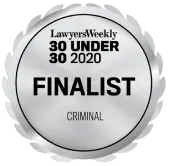Use Carriage Service Offences

What are Use Carriage Service Offences?
The Criminal Code Act 1995 encompasses numerous offences involving the use of a carriage service. These vary in seriousness, including threatening to kill another person.
Section 474.17 Criminal Code Act 1995 governs the offence of using a carriage service to menace/harass/offend another person.
Section 474.22 includes the following offences:
- Use of carriage service to solicit child abuse material
- Use of carriage service to transmit/publish/promote child abuse material
- Use of carriage service to transmit child abuse material to self
- Use of carriage service to access child abuse material
- Use of carriage service to solicit child abuse material
It is important to seek expert legal advice if you have been charged with this offence in order to maximise your chances at getting the best possible outcome in court.
Or contact us at (02) 8067 8361
Our passionate criminal lawyers have experience representing clients charged with various different Use Carriage Service Offences.

When to reach out to a criminal defence lawyer
It is important to seek expert legal advice if you have been charged with this offence in order to maximise your chances at getting the best possible outcome in court.
Our lawyers are available 24/7 and work around the clock to provide you with tailored and precise legal advice, defending you at all costs.
Or contact us at (02) 8067 8361
FAQ
What acts are considered menacing, harassing or offensive?
Some examples are:
- Contacting another person repeatedly through phone and/or social media;
- Calling someone to insult, yell or threaten them;
- Posting offensive language and topics online or via text;
- Constant phone calls, texts or undesired social media messages to a person;
- Forwarding or sending undesired images to another person.
What is a carriage service?
Is a service such as social media, email, mobile phone that is used for carrying communications by means of guided or unguided electromagnetic energy including calls, messages and internet transmissions.
What is considered Offensive?
Words or actions that would make a reasonable person feel resentful, upset or annoyed.
How do police prove that I used a carriage service for Child Abuse Material?
There are numerous types of offences relating to Child Abuse Material.
In order to prove any of the above offences, the following must be proven beyond reasonable doubt:
- You used a carriage service; and
- You either:
a. Accessed material; or
b. Caused material to be transmitted to yourself or others; or
c. Transmitted, made available, published, distributed, advertised or promoted material; or
d. Solicited material; - The material is child pornography or abuse material.
Can I defend these charges?
Yes. Some examples are:
- You did not use a carriage service;
- The conduct does not amount to menacing, harassing or offensive accordingly to the reasonable person.
- You are a law enforcement officer acting in the course of duties and your conduct was reasonable;
- The material is not child abuse or pornography material;
- The child pornography material came into your possession unsolicited and you either did not know or as soon as you became aware of it, you took reasonable steps to get rid of it;
Is there any benefit to Pleading Guilty?
Negligent Driving is where a person is deemed to have been driving ‘without the due care and attention reasonably expected of the ordinary prudent driver’.
Where a Plea of Guilty is entered at the earliest opportunity, you will receive a reduction in your penalty by 25% on sentence.
What do the police need to prove with a menace/harass/offensive offence?
In order to prove this offence, the prosecution will need to prove each and every of the following elements:
- You used a carriage service to communicate with another person; and
- The use of that service was intentional; and
- A reasonable person would consider the communication to be menacing, harassing or offensive.
What does Menacing mean?
An expression or implied threat of detrimental or unpleasant conduct which is likely to cause the other person to act unwillingly.
What does it mean to Harass?
To bother, pester or disturb another repeatedly.
What is child abuse material?
Under section 91FB Crimes Act 1900, child abuse material is described as material that depicts or describes, in a way that reasonable persons would regard as being, in all of the circumstances, offensive:
- A person who is, appears to be or is implied to be, a child as a victim of torture, cruelty or physical abuse; or
- A person who is, appears to be or is implied to be, a child engaged in or apparently engaged in a sexual pose or sexual activity;
- A person who is, appears to be or is implied to be, a child in the presence of another person who is engaged or apparently engaged in a sexual pose or sexual activity; or
- The private parts (genital area, anal area or breasts) of a person who is, or appears to be or is implied to be, a child.
What are the maximum penalties?
The maximum penalty for offences under section 474.17 Criminal Code Act 1995 is 5 years imprisonment.
All offences relating to child abuse material are strictly indictable. This means that the matter has to be dealt with in the District Court, and is not capable of finalising in the Local Court.
These offences all carry 15 years imprisonment as a maximum penalty.
Award Winning Criminal Defence Lawyer Featured In:






Get started
Contact our office today to arrange a free consultation with one of our lawyers to discuss your upcoming court proceedings.
Or contact us at (02) 8067 8361